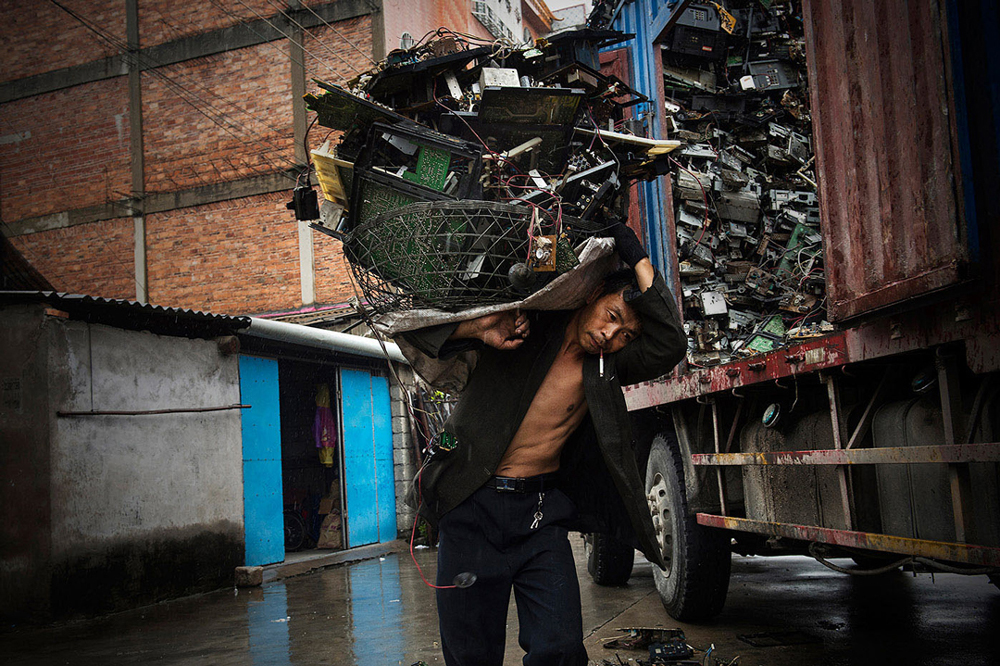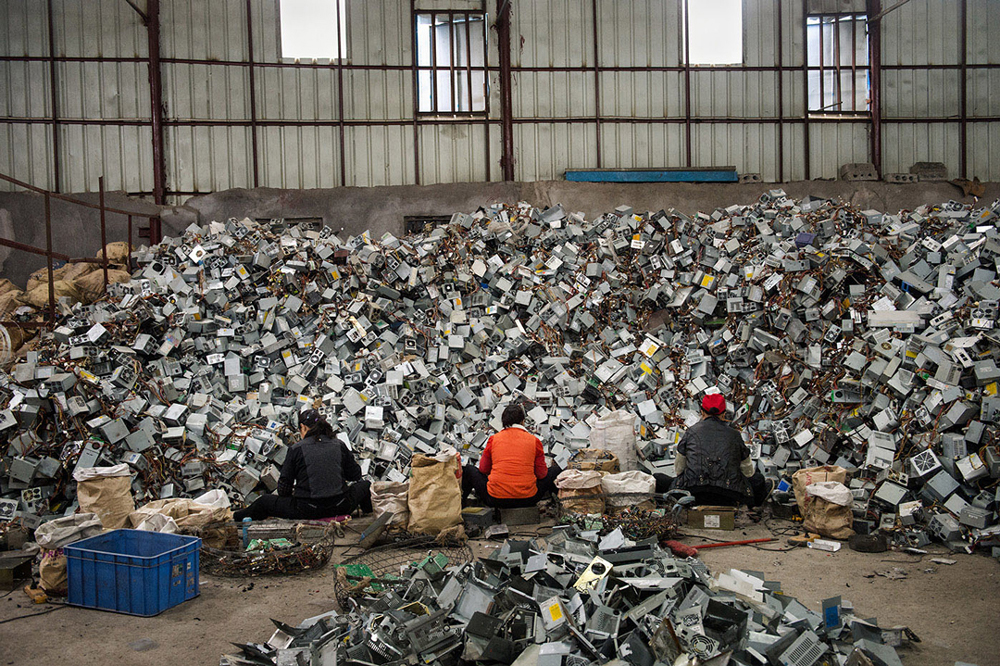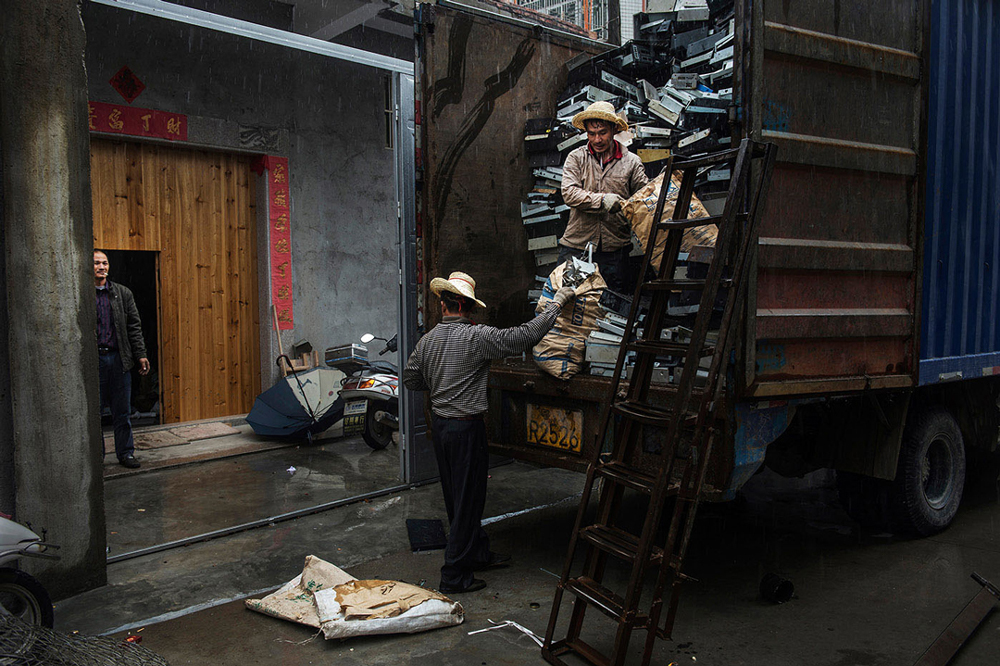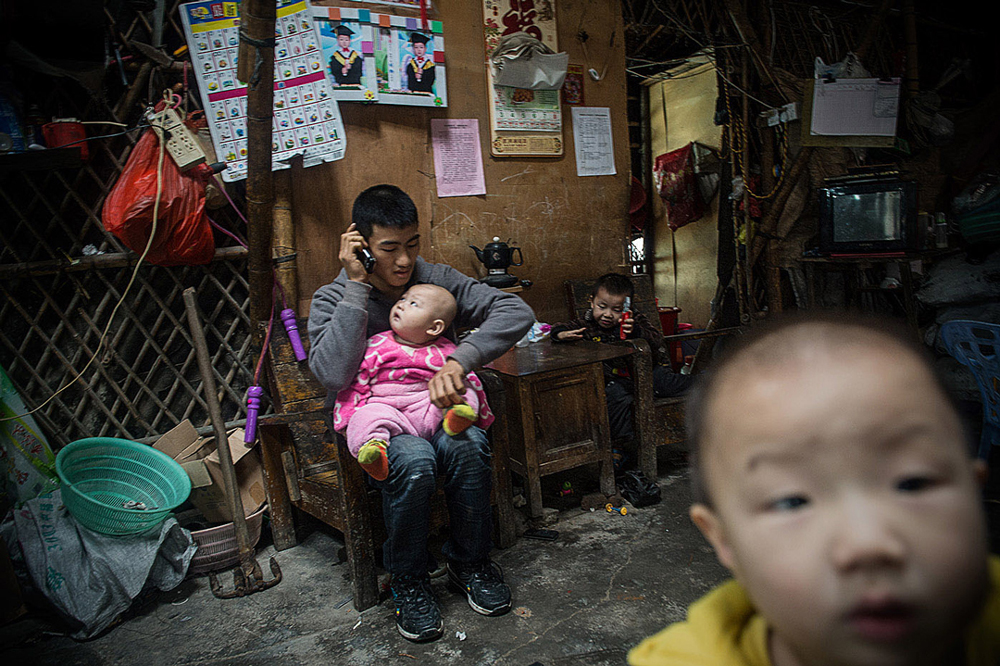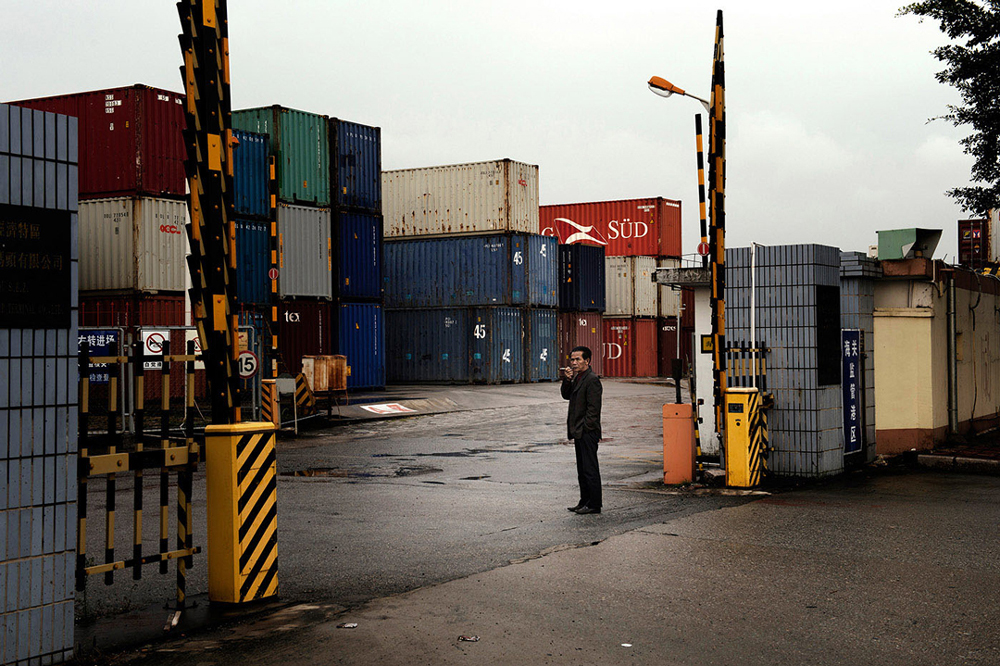Ctrl-X // e-waste in china
Since 2011 I am documenting the e-waste trails and consequences of dumping and improper recycling in different countries. Discarded computers, office electronic equipment, entertainment device electronics, mobile phones, television sets, and refrigerators – in short: E-waste which is shipped from the western world to impoverished and under developed regions of the world. These electronic devices are burned for any valuable metals. Noxious fumes fill the air; lead, cadmium, zinc, chrome, nickel and other chemical substances are emitted and damage health: headaches, dizziness, skin rashes and damage to the nervous system are the result. Not to mention the highly toxic residue that contaminates the soil. Those toxic chemicals can leach into the land over time or are released into the atmosphere, also impacting nearby communities and the whole environment. Guiyu, in Guangdong Province, Southern China, is made up of four small villages. It is the location of what may be the largest electronic waste site on earth. This niche industry employs tens of thousands of people, many of them in small, family-run workshops. Piles of discarded computer monitors sit scattered along the roadsides. All day long e-waste loaded trucks arrive in town, Workers dismantle and heat circuit boards on a steel surface to remove the computer chips soldered into it. Once the individual components have become hot, they can replace easily. Fans should channel this most existing highly toxic vapors, outside. The Circuit boards contain tiny amounts of gold and silver. After 'cooking' the boards are treated with acid baths. Greenpeace reports say 80 percent of Guiyu's children suffer from respiratory disease, and a report from Shantou University said Guiyu has the highest level of cancer-causing dioxins in the world and an elevated rate of miscarriages.
Kai Löffelbein, is a young freelance photographer from Germany (born 1981). After he studied political science in Berlin, he began his studies of â??Photojournalism and Documentary Photographyâ?? in 2008 at the University of Applied Sciences and Arts in Hannover. Since 2007, he has been working as a freelance photographer for different NGOs and several German newspapers. Kai Löffelbein traveled through various countries in South America, Asia and Eastern Europe. In doing so, the art of photography provided him with insights into completely different ways of life and living conditions. Meeting people who have to fight for survival on a daily basis raised his desire to grab his viewersâ?? attention and make them take action. His images furthermore show the effects of socio-political and economic processes on common people. Kai Löffelbein feels committed to Concerned Photography. â??My images always take sides. Their aim is not only to draw peopleâ??s attention to various social grievances but also to make us realize our own responsibility in a globalized worldâ??, says the photographer. â??My aim is to treat people with respect and the utmost empathy without displaying poverty and suffering for the purpose of sensationalism. The human being in all its complexity is always at the heart of my work.â?? His photos were exhibited, for example, in Brussels, London and Moscow as well as several times in Germany.
